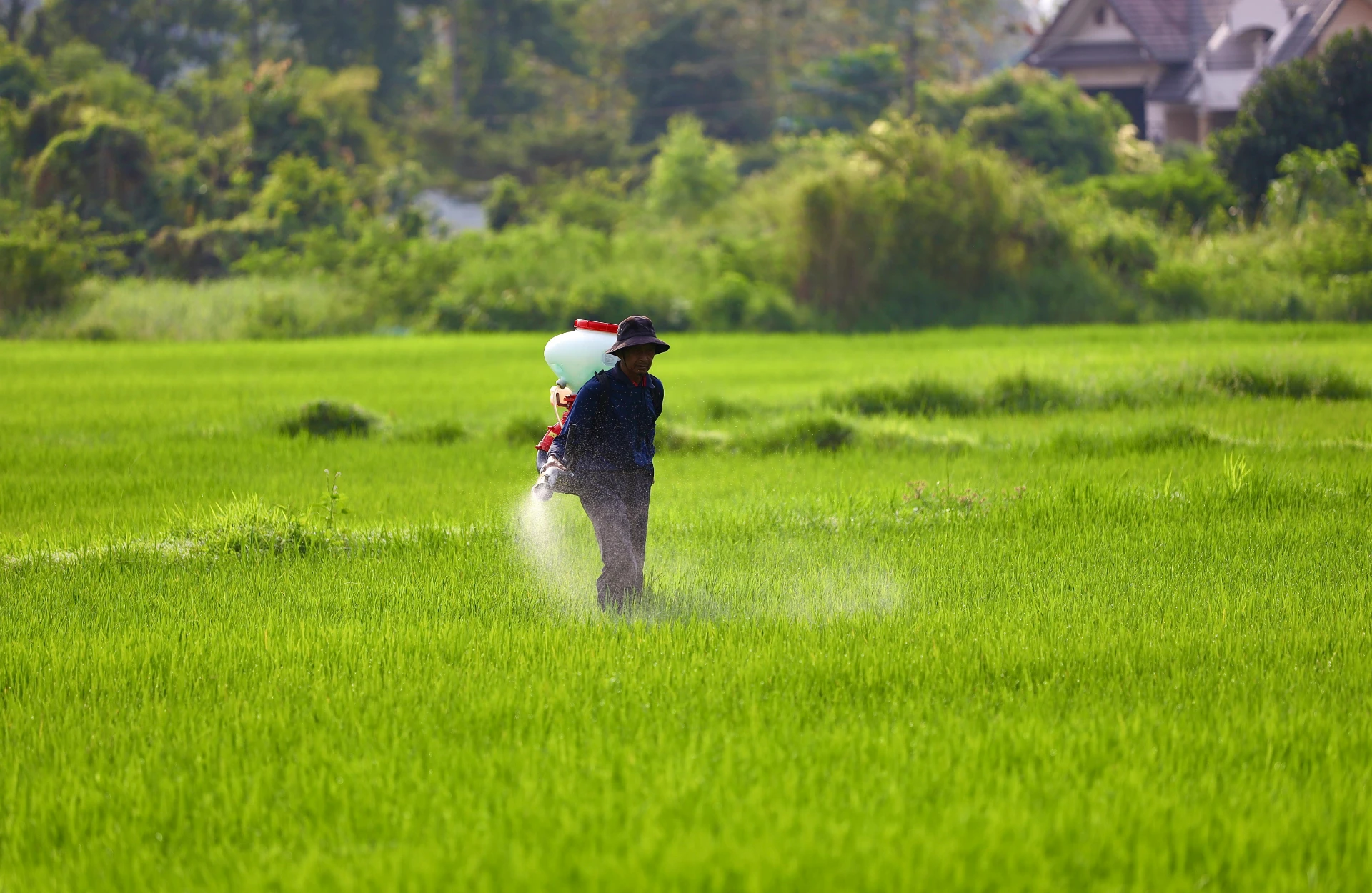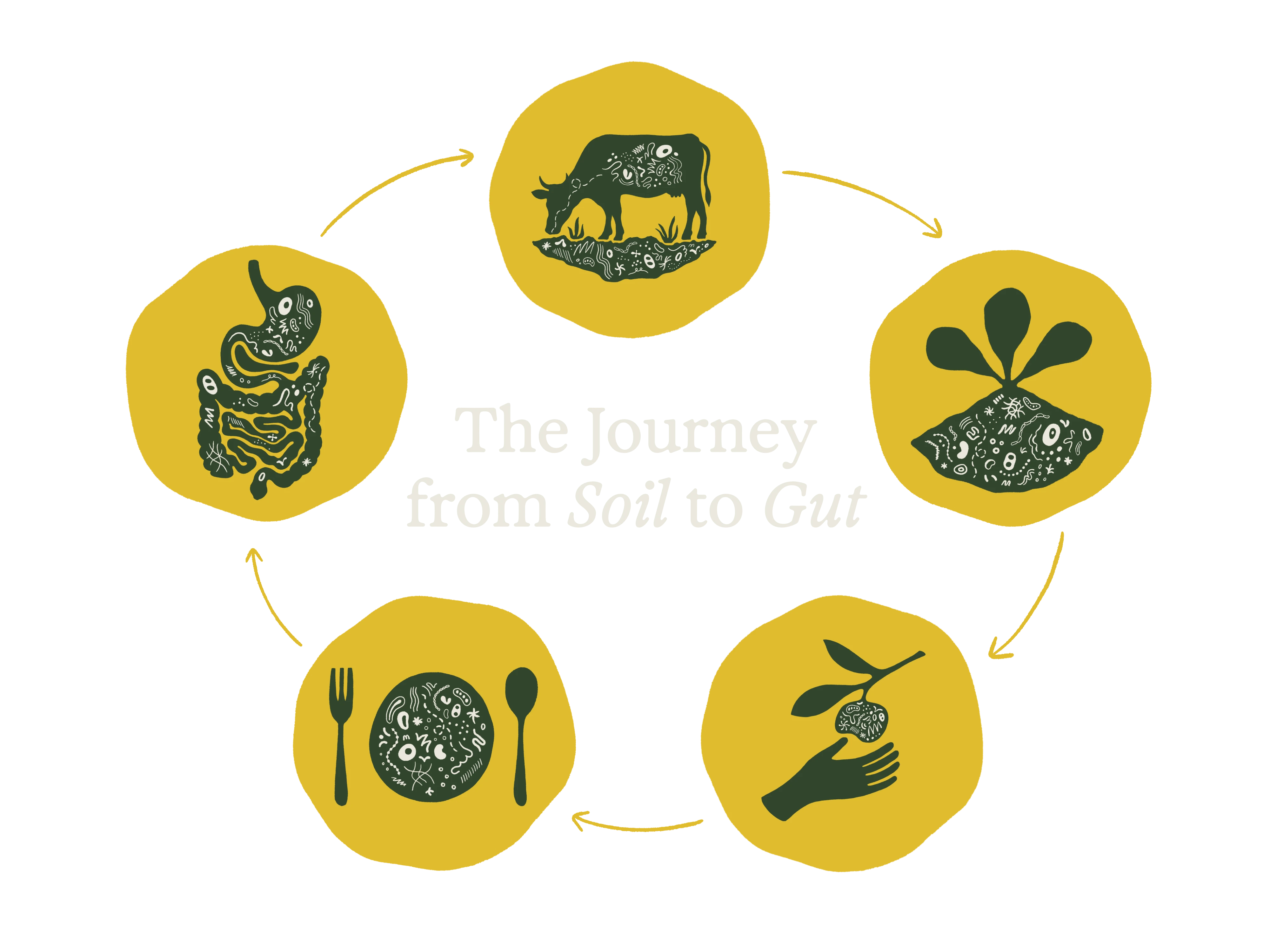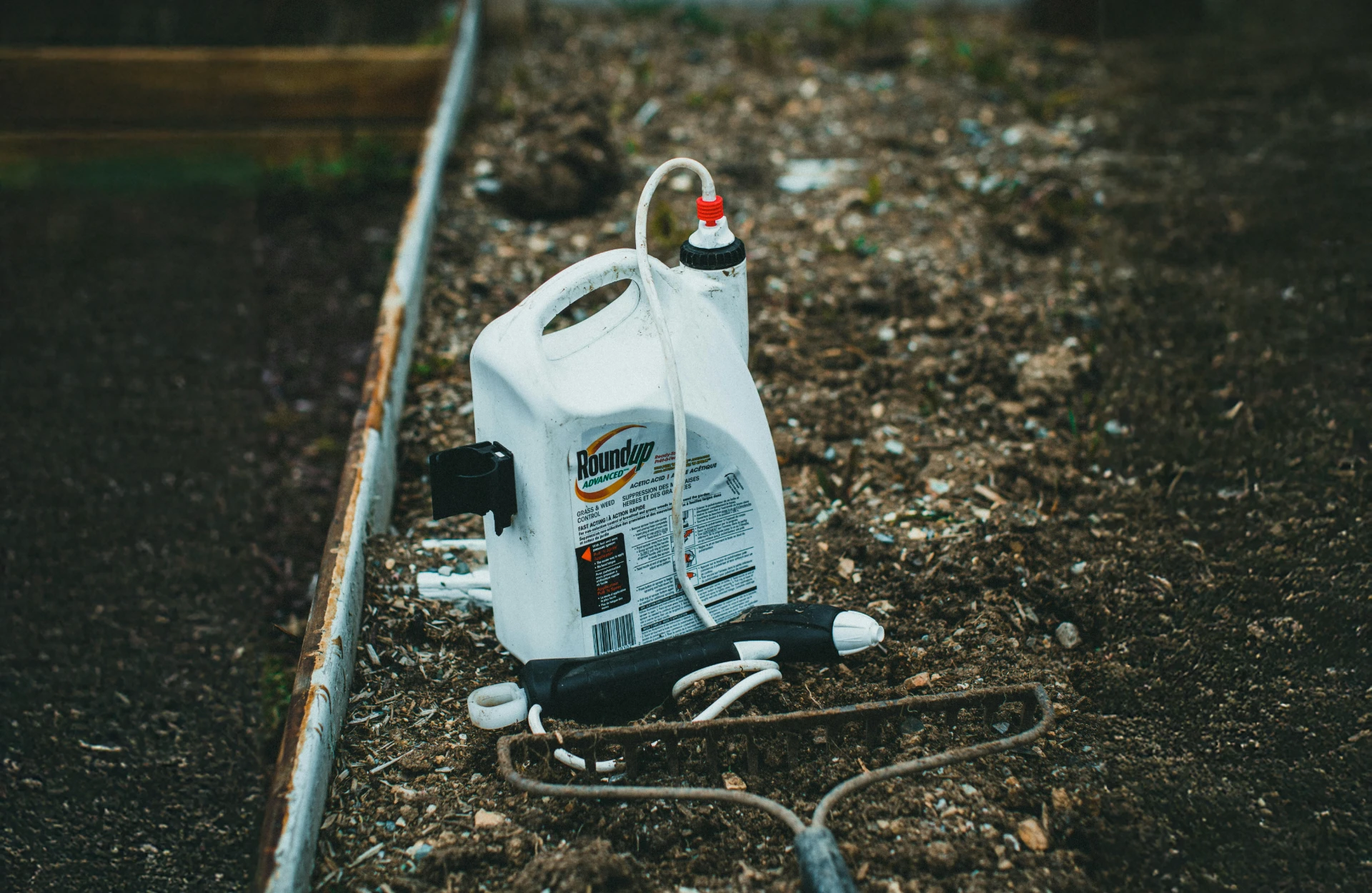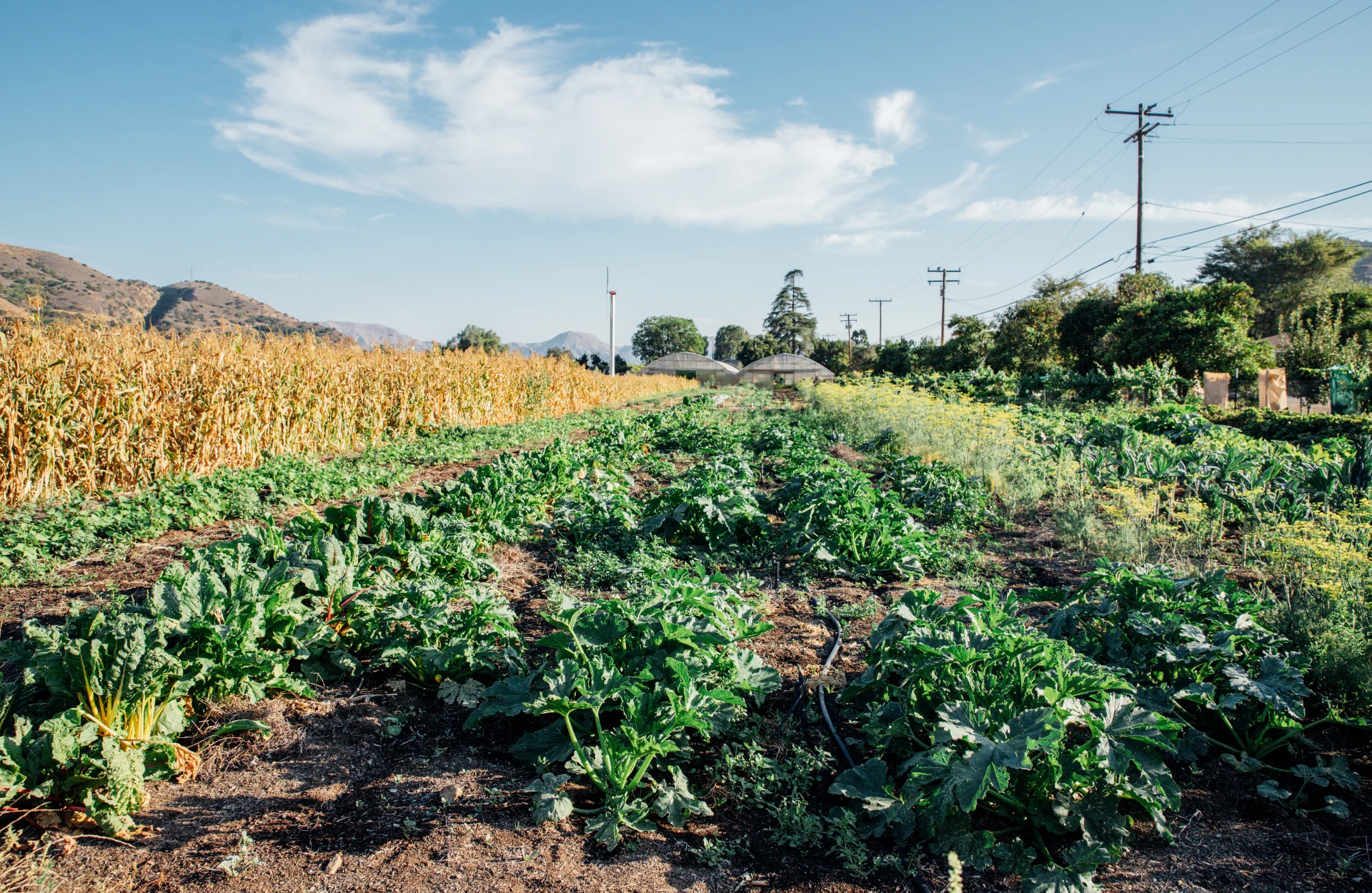
18 Questions
& Answers with Kelly
Meet Glyphosate Girl
Kelly Ryerson works at the intersection of agriculture and health. She regularly collaborates with regenerative farmers, scientists, policymakers and media to address agrochemical damage to our soil and bodies. She also started the news site Glyphosate Facts, which explains the link between chemical agriculture and the explosion in chronic disease. Kelly has contributed to numerous podcasts, publications, and documentaries including the recent award winning documentary Common Ground. She is an Ambassador for The Rodale Institute. Kelly has a BA from Dartmouth College, an MBA from the Stanford Graduate School of Business, and completed training in integrative health coaching at Duke Integrative Medicine.

What sparked your initial passion to be an advocate in the food system?
Kelly: I grew up in a home in which my mom only had super clean, unprocessed foods available in our kitchen. Despite this strong foundation, I ended up struggling with digestive issues as a teen, which I vaguely knew had something to do with diet – likely the items that I was eating outside of the home. When I started realizing that I felt better staying clear of the junk, I started a nutrition column in my high school newspaper. Amazingly, I had my first taste of the challenges that present themselves when one tries to speak out about food that causes harm. I criticized McDonald’s for misrepresenting the health of their food, and had my column pulled because McDonald’s happened to have donated computers to the school I attended. Little did I know that going up against companies that contribute to our toxic food supply would be something that I would end up pursuing as a career!

Tell us about your line of work
Kelly: Over the past decade I’ve carved out a unique situation in which I collaborate with people across the many different components of the food system. I began my foray into food activism when I decided to start a blog called Glyphosate Girl to write about the Roundup cancer trials that were taking place in San Francisco. It was a landmark trial in that it was the first time that Monsanto (the maker of the herbicide Roundup and the active ingredient glyphosate) had been tried in front of a jury. I didn’t feel that enough of the shocking details of Monsanto’s corrupt behavior were being shared by the mainstream media, so I quit my job and tapped into my creative writing to bring the trial details to life for curious readers.
Because my background was in finance, I knew that there were a lot of investors who would be extremely interested in daily, blow-by-blow coverage of how the trials were shaping up, and I quickly gained a surprisingly substantial following.
After spending a year sitting in courtrooms covering the trials, I joined a documentary team, which took me across the country to meet with farmers, scientists, government officials, and activists – all to study the impact of glyphosate.
I have always been a connector and found my place in the clean food and regenerative farming movement by facilitating collaboration between various parties. I contemplated starting my own non-profit, but decided that my ability to contribute to the movement was greater if I wasn’t competing for the same limited funds that all nonprofits seek. And I love meeting all of the different teams working towards the same goal – there are a lot of fabulous characters in the clean food, regenerative agriculture movement!
An example of what a typical day looks like for me includes meeting with congressional staffers in health and ag, chatting with a farmer about their pesticide use trends as they adopt regenerative practices, collaborating with both for-profits and nonprofits on specific campaigns, and pollinating the regenerative agriculture movement by introducing people from across specialties. I often give talks at schools, political rallies, and various organizations, and guest lecture on regenerative agriculture at my alma mater, Dartmouth College.

Can you speak about your own personal health journey and how food has played a role in your healing?
Kelly: After I had my second child, I felt extremely depleted. What was first some digestive issues and exhaustion expanded into a laundry list of symptoms, including rashes, sinus infections, hair loss, neuropathy, acid reflux, and weakness. I saw over 20 different specialists to try to figure out what was wrong, and they all said that my bloodwork looked fine. Most suggested that my problem could be psychological.
Desperate for relief, as my ability to function all but disappeared (at this point I moved in with my parents so that they could take care of me and my kids while my husband worked), I started layering on the medications that the doctors suggested. Two antidepressants, a benzodiazepine, gabapentin and a few steroids later, I still found myself sick from the original illness, but now topped off with side effects of the medications.
Desperate for answers, I finally went to see a psychiatrist because I wondered if the doctors might be right – that there was a psychological reason behind my illness. That psychiatrist reviewed my intake bloodwork and revealed that I had significant and severe vitamin deficiencies. The next doctor I visited suggested that I try giving up gluten, because some of my autoimmunity markers were out of whack.
I gave up gluten, and started to supplement vitamins. I spent an hour a day laying outside in the sun (in an embarrassing turn of fate, the Google satellite image of my home caught me lying outside in the nude!) I felt my body begin to stabilize over several weeks, and even had some moments of feeling normal again. I began a slow taper off the drugs – any small reduction of the benzodiazepines would give me a seizure, so I had to taper off incrementally over the course of several years. But as I slowly healed I began to feel better, day by day.
When I decided to test if gluten actually was a key cause of my illness, I ate a slice of pizza. What followed was horrendous – rashes, exhaustion to the point of needing to sleep, and neuropathy all came roaring back.
Amazed that my body was so sensitive, I wanted to investigate what was behind the epidemic of gluten sensitivity. I attended a celiac and gluten sensitivity conference at Columbia University, where scientists and doctors were presenting hypotheses of what might be happening in our bodies. It suddenly occurred to me that it might not be the gluten creating the problem, but rather a pesticide. I asked the panel if anything is put on our grains at the farm, and none of the scientists knew. After the session concluded, a scientist from General Mills found me and said that Roundup – which has the active ingredient glyphosate – is sprayed on our grain just before harvest to dry it out and facilitate an easier harvest. In fact, glyphosate is found on most of our non-organic food and grains, particularly those crops that are sprayed with a drying agent.
From that point forward, I began purchasing mostly organic foods, and saw my health continue to improve. It was a long process, but I remember the day that I actually felt “normal” again. It was miraculous and something I never thought I could achieve.
At the height of my symptoms, I had lost the ability to walk. On one occasion, during a 2 hour long full-body MRI, I made a promise to God that if my scan was clear and I could find a way to actually heal myself, then I would do everything in my power to improve the situation for everyone else struggling with these mysterious chronic diseases too. I fully believe that God answered me that day.

You mention Roundup and its active ingredient Glyphosate. What is it exactly and how and why is it used?
Kelly:Glyphosate, the active ingredient in the weedkiller Roundup, is the most widely used pesticide on the planet. In the US, 280 million pounds of glyphosate are sprayed on agricultural land every year. Unfortunately, glyphosate is also linked to many devastating health conditions, yet our regulators continue to permit its use by farmers, landscapers, and even consumers that shop at the local hardware store.
Glyphosate was first created in 1950 by a Swiss chemist while researching potential new pharmaceuticals. When no pharmaceutical application was found, the chemical was eventually patented in 1964 for use as a boiler and pipe cleaner, due to its ability to effectively bind to and remove minerals like calcium, magnesium, manganese, copper and zinc.
In 1970, Monsanto chemists Dr. Phil Hamm and Dr. John Franz identified the herbicidal activity of glyphosate, and patented it for use as a herbicide in 1971. The formulated glyphosate product, called “Roundup”, was first sold commercially by Monsanto in 1974 for both agricultural and residential use.
In 1996, Monsanto introduced “Roundup Ready” seeds that had been genetically modified to be resistant to the effects of glyphosate. Soy, corn, and cotton had now been modified to grow even when sprayed with the herbicide glyphosate. This trait of herbicide resistance led to an explosion in the use of glyphosate, because now farmers could spray vast amounts directly onto their growing crops and kill any weeds competing for the soil nutrients.
For the two decades following the introduction of Roundup Ready GMOs, glyphosate use rose almost 15-fold globally. According to the EPA, about 280 million pounds of glyphosate are applied to an average of 298 million acres of cropland annually.


What makes glyphosate so dangerous to both human beings and the planet?
Kelly: Glyphosate has been used in such excess that very little is left untouched – it is highly water-soluble and can easily contaminate rivers and groundwater. In some cases, it is used as an aqueous weed killer in which glyphosate is directly sprayed into bodies of water under the false presumption that it won’t impact any of the sea life.
The EPA performed a Biological Evaluation of glyphosate in 2021, and found that glyphosate is likely to injure or kill 93% of Endangered Species. This study should be an alarm for all species who are equally at risk.
Glyphosate is also a metal-chelator, meaning it binds to minerals. When glyphosate is in the soil, it binds to the minerals that the crops and our bodies need, and makes them bio-unavailable, therefore depleting our food of much of its nutritional value

Can you explain the interconnected relationship between soil, food, and our gut?
Kelly: Both the soil and the human body have complex microbial communities, including bacteria and fungi, that are critical to healthy function. When the soil is abused, its microbiome changes from a fertile ecosystem teeming with life to lifeless dust. Much of our food – both organic and conventional – is grown in soil that is severely depleted, and so our bodies are often starved of the nutrients that we need to fend off disease and function optimally.
Similarly, the human body’s ability to thrive physically is highly dependent upon the health of the gut microbiome. When our gut microbiome is imbalanced and lacking diversity, we are more prone to disease. Our gut microbiome is constantly inundated with toxins from our food and environment, and just like the soil, is incapable of generating optimal health under the pressure of repeated toxic assaults.
Glyphosate has an enormous impact on the soil. It is toxic to beneficial bacteria, including nitrogen-fixing microbes, mycorrhizae, biological control organisms, earthworms and more. It compromises plant resilience, stimulates soilborne diseases, reduces nutrient uptake, and persists for years in the soil. Glyphosate further impacts the plants because it bioaccumulates in the shoot, root and reproductive tissues – meaning you can’t simply wash it off.
With all of this disruption occurring within the soil and plants, naturally those who feed on the plants or inhabit an environment that has been sprayed with glyphosate will be similarly affected. Just as glyphosate impacts soil organic matter, it also affects our own gut microbiome. It is particularly harmful because it kills our beneficial gut bacteria while allowing the pathogenic bacteria to proliferate.


What are the most harmful health effects associated with glyphosate?
Kelly: Peer-reviewed, independent research connects glyphosate with a long list of negative health effects. Research has connected glyphosate exposure to cancer, kidney disease, gut dysbiosis, autoimmunity, infertility, inflammation, liver disease, miscarriages, depression, endocrine disruption, sperm death, autism, ADHD, neurodegeneration, alzheimer’s, and epigenetic damage.

How is chemical usage in agriculture being linked to the global rise in chronic disease?
Kelly: It is no surprise that the chronic disease epidemic has exploded in the United States given the toxins that we are all exposed to daily. Glyphosate is not the only agricultural chemical that is contributing to our disease state, though it is the most used pesticide in terms of quantity. We are also exposed to additional herbicides, fungicides and insecticides. “Cide” means “kill”, and it is perpetually fascinating to me that people don’t realize that we are not entirely dissimilar from other forms of life. It should be a logical connection that these poisons might also be contributing to human illness.
Beginning with the post WWII “Green Revolution”, synthetic fertilizers and chemicals have been used to grow food in the United States. The introduction of GMOs to the food system led the way to creating a system based on highly-processed, nutrient-lacking food. The animals that are fed the majority of the GMO crops – often in Confined Animal Feeding Operations (CAFOs) – are layered with pharmaceuticals to keep them alive. I had the opportunity to visit a CAFO and it was the most depressing experience – the animals were in a terrible condition, many with mucus running out of their noses and completely despondent. It made me think – is this really that dissimilar to what we are seeing in the human population, eating the same junk and trying to medicate symptoms? Inflammation, lack of energy, depression, infections – the similarities are striking.


If glyphosate is so prevalent and there are so many studies linking it to human health issues, why isn’t our medical system talking about this?
Kelly: The desperation that sick people experience when facing the same dismissive medical run-around and gaslighting that I endured significantly worsens the hopelessness they already feel.
My friends who are functional medicine doctors have waitlists that could keep them busy for years. These are the doctors who truly understand root causes and how environmental factors can trigger or aggravate our health conditions.
Most, but not all, western-trained physicians know little to nothing about nutrition, let alone farming systems and the pesticides that are polluting our food. In my opinion, ‘Environmental Health’ should be a mandatory class in medical school, because the chemical ‘bath’ in which we exist must be considered when making accurate diagnoses.
When I was recovering from my illness, I started studying physiology and cell biology to make sense of what was happening to me on a cellular level. Any student of these subjects should recognize the dynamic interplay of our biological systems, working together in a miraculous symphony. It stands to reason, then, that introducing poisons into this delicate balance, would inevitably lead to system malfunctions.
There seems to be cognitive dissonance going on, and it is not helped by the grip that the pharmaceutical industry has on the healthcare system. Imagine a scenario in which doctors were trained on agricultural and environmental toxicity. If that were the case, and a doctor could prescribe an organic diet and the installation of a water filter, the proportion of drugs sold would decrease.
To add to the predicament, one company owns our entire agricultural system. In 2018, the agrochemical giant Monsanto, who produces glyphosate, was acquired by the pharmaceutical giant Bayer. The merger brought together two powerful industries, and Bayer became not only the manufacturer of the drugs to cure chronic disease, but also the manufacturer of the seeds and agricultural chemicals that are likely causing the disease in the first place.
The agencies that should be regulating our food and chemicals have been co-opted by industry. Even in the face of clear evidence that glyphosate can cause cancer, the EPA continues to side with the manufacturers who claim that it does not impact human health. During the ‘Roundup Trials’, the EPA made a public announcement – for no clear reason – that they just checked again, and glyphosate doesn’t cause cancer. The EPA works on behalf of the chemical companies, and not on behalf of the citizens.
Until medical schools and research institutions detach themselves from the pervasive funding streams provided by pharmaceutical and agrochemical industries, there will be no shift in the understanding of how toxicity is underlying our chronic disease epidemic. Patients will continue to be gaslit by medical professionals when they raise questions about the impact of nutrition and chemical toxicity on their their illnesses. We must continue to bring these discussions to the forefront of our collective consciousness.

How can we begin to rid the soil - and our food system - of glyphosate?
Kelly: Well – first and foremost, we have to stop spraying it. Farmers who are committed to adopting regenerative agriculture practices will have to roll back their use of herbicides until they feel comfortable and confident that they can farm without them. The lowest hanging fruit in terms of healing our soil and bodies from glyphosate is to ban pre-harvest desiccation with all synthetic pesticides and return to previous forms of harvesting crops. That means to bring back the swathers and air dryers on the farm.
Glyphosate can be more readily cleared from the soil once the organic matter has re-established itself through the soil healing process.
Unfortunately, organic food often tests positive for low levels of glyphosate. While it isn’t too surprising given its omnipresence in the soil and water, it is likely that a key source of the glyphosate is from the manure-based fertilizer that is used in place of synthetic fertilizer in organic systems. The manure most often comes from CAFOs, where the animals are fed the GMO crops that are laden with glyphosate and other pesticides.
Regenerative agriculture practices, including cover cropping, crop rotation, no-till practices, and restoration of ecosystems, will dramatically decrease dependency on glyphosate as well as other synthetic inputs.

From your perspective, what does a healthy food system look like?
Kelly: The dream situation begins with soil. Soil teeming with organic matter is the basis for healthy, nutrient-dense crops. Through crop rotation, cover cropping, no-till practices, elimination of pesticides, integration of agroforestry, and thoughtful grazing techniques, we can restore balance to the land. Ideally, these regenerative farms provide food locally, offering a diverse range of crops rather than the government-subsidized monocultures that dominate agriculture today.
When everyone can have access to real, healthy food from regenerative farming systems, they will find that their health improves and the overall chronic disease burden decreases.
I often wonder what our country would look like if we were to successfully transition from large scale industrial agriculture to regenerative farms, allowing natural foundational minerals like magnesium, zinc and manganese to return to our diets. Can you imagine how many aches, arguments, and anxiety attacks would disappear?
The main impediments to realizing a healthy food system lie in the type of government subsidies that we provide to farmers. The government props up the GMO megafarms and their toxic products through subsidies, leaving many small farmers and farmers of specialty crops out of luck. Small-scale farmers and ranchers have trouble finding processors for their crops and meat, which is a gap that must be filled if we are ever going to realize large-scale adoption of regenerative practices.

What are some things we can do to build resilience against glyphosate?
Kelly: 1) get a high-quality water filter 2) eat organically and 3) supplement minerals to build back what glyphosate has stripped away.


What are the best actions that an individual and community can take to begin to lower their exposure to glyphosate?
Kelly: It is such a perpetual challenge to avoid glyphosate – it is sprayed not only in agriculture, but also in schools, parks, forests and on railroad tracks, roadways, sidewalks, gardens, and lakes. It is in the rain and air.
To reduce my exposure to glyphosate, I prioritize eating as cleanly as possible, focusing on whole foods and avoiding anything processed. When organic options aren’t available, I skip items likely to have been sprayed with glyphosate as a harvest aid, like grains and chickpeas. However, I also look for foods grown by farmers who may not be certified organic but are committed to reducing toxic inputs—often, they’re taking significant steps towards healthier, more sustainable practices. At farmers’ markets, I make it a point to ask about these practices directly, and I’ve even spoken with produce managers at Whole Foods to find out more. As a bonus, if a farmer is practicing regenerative agriculture, the nutrient density of the food is typically higher. After all, healthy soil is the foundation of healthy food!
Because glyphosate can be found in municipal water supplies, I filter my drinking water and have attached water filters to my shower head and bath faucet.
I no longer buy flowers at the grocery store, and am even reluctant to get them from a florist unless I know they source flowers that are not treated with pesticides. If you are ever arranging a flower bouquet, make sure to wear gloves to protect yourself from the toxic chemicals that are so often used to grow those flowers.
Feel empowered to approach your city hall or school board and request the removal of toxic pesticides, including glyphosate, from all public spaces. Many communities have already achieved this shift, giving us all one less health concern to worry about!

If pesticides are such a threat to our soil and health systems, why isn’t the government in the United States doing anything about it?
Kelly: When I first learned about the dangers of glyphosate, my first thought was – oh my gosh, I need to get in touch with the EPA! They need to know what I’ve discovered! Today, I laugh at myself because of course they know the havoc that glyphosate is wreaking on our bodies and environment. They have chosen to overlook it due to political pressure from lobbyists, ‘Big Ag’, and the promise of the “revolving door”. A revolving door is the metaphor for an employee who goes from government to industry and sometimes back to government, with a massive paycheck from the corporation as the incentive to make pro-industry regulatory decisions.
Unfortunately, as internal Monsanto documents have proven, glyphosate manufacturers work closely with the regulators to make sure that their poisons get approved. The EPA will often base its regulatory decision on research that has been paid for by the manufacturers themselves. In several cases, glyphosate studies were ghostwritten to appear as though they were written by scientists independent of Monsanto, but in fact had been bought and paid for by the company themselves.
I recently paid a visit to the EPA to discuss the endocrine disrupting properties of glyphosate, and to request that they reopen the evaluation of the chemical. Before my meeting, I learned that 27 of the 32 studies that were relied upon for the endocrine disruption analysis were provided from industry, and kept hidden from the public. The other 5 studies were cherrypicked to show that glyphosate is not an endocrine disruptor. In reality, there is an enormous library of studies pointing to the many endocrine disrupting effects of glyphosate exposure, so the studies selected by the EPA were not representative of the greater body of available research
During my meeting with the EPA, I brought along a provocative image—a man in boxer shorts—to capture attention and ignite concern. The reality is that everyone in that room should be deeply alarmed: glyphosate has been detected in semen, is known to damage sperm, kills prostate cells, and is linked to a staggering 20% decline in testosterone levels. And we wonder why there is a fertility crisis! Glyphosate is certainly a contributing factor.

What legislation is currently in play that impacts the average person's ability to access safe and affordable food?
Kelly: The most concerning piece of legislation that I am trying to shout from the rooftops about is a component of the proposed Farm Bill, which will provide a liability shield to pesticide manufacturers. Bayer’s stock price has gone down over 70% since they acquired Monsanto in 2018. The Roundup cancer litigation has resulted in settlements of over $12 Billion, yet Bayer refuses to admit the carcinogenicity of glyphosate. Instead, they are trying to pass legislation that would bar victims who have become sick from pesticide exposure, including farmers, from suing them. It is a heartbreakingly inhumane proposition.
Furthermore, Bayer is trying to take away all local and state power to regulate pesticides – including California and the Prop 65 listing that the state finds glyphosate to be a carcinogen. Some extremely corrupt members of Congress are working hand in hand with Bayer to make this liability shield a reality, and public health will suffer a huge blow if it passes.
Several other interesting pieces of legislation have been introduced recently. One is the Safe School Meals Act from Senator Cory Booker. This legislation would place limits on heavy metals, ban certain pesticide residues (including glyphosate), trigger safety reassessment of food additives including artificial food dyes, and ban the use of PFAS, phthalates and bisphenols in school meal food packaging.
Another bill recently introduced by Representative Rosa DeLauro is the Toxic Free Food Act, which would require the FDA to close the “Generally Recognized as Safe” (GRAS) loophole and make chemical food additives subject to FDA approval and oversight. Right now, companies decide whether additives are safe, and easily skirt FDA oversight. It has led to a flood of chemicals in the American food supply that have not been sufficiently scrutinized for safety.

What can the average person do to get involved in the movement and advocate for change in their local communities?
Kelly: A great start is to call your city council and find out what chemicals they are using in their landscaping practices. Once you understand the situation, you can put together a letter to recommend a transition to organic land care. It is not something that happens overnight – it takes many meetings with your city council and other officials to create change. But you can succeed! You can also start your advocacy work on a state level by meeting with your elected officials to see what bills regarding chemical usage might be live both in the state and federal congress.
You can write op-eds for local newspapers and publications to shed light on the toxicity of our food and environment. Through social media you can raise awareness about glyphosate and its dangers but sharing content with the hashtag #glyphosate.
Get comfortable with public speaking – I had to work hard to overcome my fear because I had major stage fright for most of my life. At some point, I realized that if I wasn’t willing to work on it and force myself to speak up, then this information will never get out there into the public domain. There are all kinds of courses online to practice, and I even had a VR app that simulated crowds. It really worked!
Another place to start is by setting an example in your own garden. My family replaced the grass in front of our house with planter boxes. Because we live in suburbia where houses are close together, I get a lot of people who walk by and want to learn about the garden. I proudly have a “no pesticides” sign, which really embarrassed my kids for a while!

Are there any ways that you have been inspired that there is hope for a healthier future?
Kelly: I had the opportunity to give a talk to an entire high school, discussing the connection between food, farming, and health. Many eyes were wide, and many questions from students followed. With over 50% of kids experiencing chronic illness in the United States, it made sense that many of those in front of me were sick of feeling sick! I am freshly inspired because so many kids continue to reach out to me to see how they can pursue regenerative agriculture and food system projects and careers. I think that they realize how grim things are, and have the energy and motivation to fix the problem that the adults have created.
Also – I have this poem on my wall and I read it every day.


Do you recommend any books, resources, or leading voices to learn more about pesticides and their impact on human health?
Kelly: My very favorite book is Dirt to Soil by farmer Gabe Brown. In the book, he shares his story of desperation and hope, and teaches us how to regenerate our soil and ecosystems. His story is both inspiring and instructive.
Others I highly recommend:
What Your Food Ate by David Montgomery and Anne Bikle
Toxic Legacy by Dr. Stephanie Seneff
What’s Making Our Children Sick by Dr. Michelle Perro
Count Down by Dr. Shanna Swan
Seed Money by Bartow Elmore
The movie Common Ground
And the podcast Regenerative Agriculture Podcast by John Kempf
